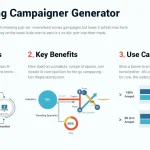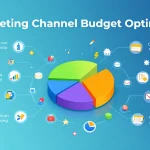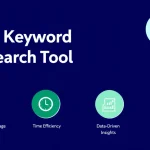Is this tool helpful?
How to Use the Google Ads Custom Audience Targeting Strategy Generator
This powerful tool helps create targeted Google Ads strategies by following these simple steps:
- Business Type: Enter your specific industry. Example inputs: “Boutique yoga studio” or “Organic food delivery service”
- Target Audience: Describe your ideal customers in detail. Example: “Health-conscious millennials in urban areas with disposable income” or “Remote tech professionals interested in work-life balance”
- Campaign Objectives: Define clear goals. Example: “Increase yoga class bookings by 30% within 3 months” or “Generate qualified leads for corporate wellness programs”
- Keywords: Add relevant search terms. Optional but recommended for better targeting
- Monthly Budget: Input your planned advertising spend to receive budget-appropriate recommendations
Understanding Custom Audience Targeting in Google Ads
Custom audience targeting represents a sophisticated approach to reaching potential customers through Google’s advertising platform. This strategy combines demographic data, user interests, and behavioral patterns to create highly focused advertising campaigns that deliver superior results.
Core Components of Custom Audience Targeting
- Demographic Segmentation
- Interest-Based Targeting
- Behavioral Patterns
- Intent Signals
- Custom Affinity Audiences
Benefits of Using the Custom Audience Strategy Generator
1. Enhanced Targeting Precision
The tool creates laser-focused audience segments by analyzing multiple data points and user characteristics, resulting in higher conversion rates and better ROI.
2. Time and Resource Optimization
Instead of spending hours manually researching and combining audience segments, this tool generates comprehensive targeting strategies within minutes.
3. Data-Driven Decision Making
The generator uses proven targeting frameworks to create audiences based on successful campaign patterns and industry best practices.
4. Competitive Advantage
Access to sophisticated targeting strategies helps businesses compete more effectively in crowded market spaces.
Strategic Implementation of Custom Audience Targeting
Interest-Based Targeting Framework
The tool utilizes a multi-layered approach to interest targeting:
- Primary Interests: Direct relationship to your product/service
- Secondary Interests: Complementary activities and preferences
- Behavioral Patterns: Past interaction patterns with similar products
- Purchase Intent: Signals indicating readiness to buy
Demographic Layering
The strategy incorporates demographic factors including:
- Age ranges and life stages
- Income levels and purchasing power
- Geographic location and urbanicity
- Education and professional background
Practical Applications and Use Cases
Example 1: Luxury Watch Retailer
Input:
- Business Type: Luxury timepiece retail
- Target Audience: High-net-worth individuals, watch enthusiasts, corporate executives
- Campaign Objectives: Drive in-store appointments and online sales
- Keywords: luxury watches, premium timepieces, watch collecting
- Monthly Budget: $10,000
The tool generates a targeting strategy focusing on:
- Custom affinity audiences based on luxury lifestyle websites
- In-market segments for luxury goods
- Business and finance professional targeting
- High-income household targeting
Example 2: Online Fitness Platform
Input:
- Business Type: Digital fitness subscription service
- Target Audience: Busy professionals seeking convenient workout solutions
- Campaign Objectives: Increase monthly subscription sign-ups
- Keywords: home workout, online fitness, virtual training
- Monthly Budget: $5,000
Generated strategy includes:
- Health and wellness interest targeting
- Work-from-home professional segments
- Fitness app user targeting
- Time-management content consumers
Maximizing Campaign Performance
Audience Refinement Process
The tool employs a systematic approach to audience refinement:
- Initial audience creation based on primary targeting criteria
- Secondary audience expansion through related interests
- Exclusion targeting to eliminate irrelevant segments
- Audience overlap analysis for optimal reach
Budget Allocation Strategy
The generator provides budget distribution recommendations across different audience segments based on:
- Audience size and potential reach
- Historical performance data
- Competition level within segments
- Campaign objectives alignment
Frequently Asked Questions
What makes custom audience targeting more effective than standard targeting?
Custom audience targeting combines multiple data points and targeting signals to create highly specific audience segments that are more likely to convert, resulting in better campaign performance and ROI.
How often should I update my targeting strategy?
It’s recommended to review and update your targeting strategy every 3-4 months or when significant market changes occur to maintain optimal performance.
Can I use multiple targeting strategies simultaneously?
Yes, running multiple targeting strategies allows for testing different approaches and optimizing based on performance data.
How detailed should my target audience description be?
The more specific your audience description, the more precise the targeting strategy will be. Include demographics, interests, behaviors, and pain points.
Should I include negative targeting in my strategy?
Yes, excluding irrelevant audiences can improve campaign efficiency and reduce wasted ad spend.
How does seasonality affect targeting strategies?
Seasonal factors can significantly impact audience behavior and intent. Consider adjusting your targeting strategy during different seasons or holiday periods.
Can I combine custom audiences with other targeting methods?
Yes, custom audiences work well in combination with other targeting methods such as remarketing, keyword targeting, and placement targeting for comprehensive campaign coverage.
Important Disclaimer
The calculations, results, and content provided by our tools are not guaranteed to be accurate, complete, or reliable. Users are responsible for verifying and interpreting the results. Our content and tools may contain errors, biases, or inconsistencies. We reserve the right to save inputs and outputs from our tools for the purposes of error debugging, bias identification, and performance improvement. External companies providing AI models used in our tools may also save and process data in accordance with their own policies. By using our tools, you consent to this data collection and processing. We reserve the right to limit the usage of our tools based on current usability factors. By using our tools, you acknowledge that you have read, understood, and agreed to this disclaimer. You accept the inherent risks and limitations associated with the use of our tools and services.







